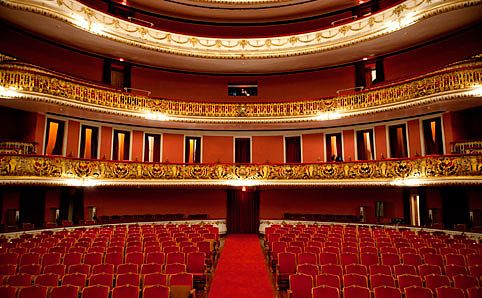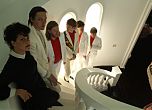
In September 2011, to the slow, mysterious fanfare of trumpets, Verdi’s dark tale of revenge – Rigoletto – commenced at the Theatro Municipal, one hundred years to the day since the curtains opened for the very first time.
A city landmark and a vital part of São Paulo’s cultural fabric, the ‘Municipal’, as it is affectionately known, reopened in June 2011 after an ambitious restoration project which lasted almost two years. And to celebrate the centenary, a series of special productions were staged, including a performance from Balé da Cidade - the city ballet company.
A theatre to rival all others
The ‘Municipal’ first opened at the turn of the 20th century with the intention of attracting the best classical music, opera and ballet talent from Brazil and abroad. At the time, São Paulo was enjoying an economic boom thanks to the growth of its coffee plantations, but its cultural scene lagged behind that of neighbouring Rio de Janeiro.
According to historian Márcia Camargos, the author of Theatro Municipal 100 Anos – Palco e Plateia da Sociedade Paulistana (100 Years of the Theatro Municipal – The Stage and Audience of Paulistana Society), ‘all the great opera companies were performing in Buenos Aires and at the Theatro Municipal in Rio de Janeiro, without so much as a sideways glance at São Paulo. The Theatro Municipal came into being to fulfill the cosmopolitan yearnings of the city’s upper classes.’
In the hands of Brazilian architect Ramos de Azevedo, work began on building the theatre in 1903, and took eight years to complete. Working in collaboration with Italian architects Cláudio Rossi and Domiziano Rossi, Ramos de Azevedo created a building with both drama and stature, similar to the neo- Renaissance and neo-Baroque style of the Paris Opera.
Resotrations revoke old memories
Inside, the theatre was decorated with bronze statues, neoclassical columns, elaborate cornices, frescoed ceilings and stained glassed windows, all of which have been painstakingly restored over the last couple of years.
‘Previous restorations had brought great improvements, though without necessarily being faithful to the original character of the building,’ says the theatre’s director Beatriz Franco do Amaral. ‘The aim of this latest project was to restore original features while at the same time installing state-of-the-art stage equipment.’ For Abel Rocha, the artistic director, it’s a new phase that ‘reaffirms the theatre’s role as the setting for the best national and international opera and ballet.’
The theatre has a rich history, from its early years as the preserve of the São Paulo elite, to the setting for cultural demonstrations such as the ‘Semana de Arte Moderna’ in 1922, which marked the start of the Modernist movement in Brazil, in which young artists such as Oswald De Andrade and Tarsila do Amaral used music, poetry and painting to mock the established artistic standards, under the shocked gaze of the city’s bourgeoisie.
And as the city’s grande dame moves into the next phase in its long life, don’t miss the chance to catch a world-class performance at the surprisingly affordable, beautiful and historic spot.
- Read more on the Theatro Municipal



